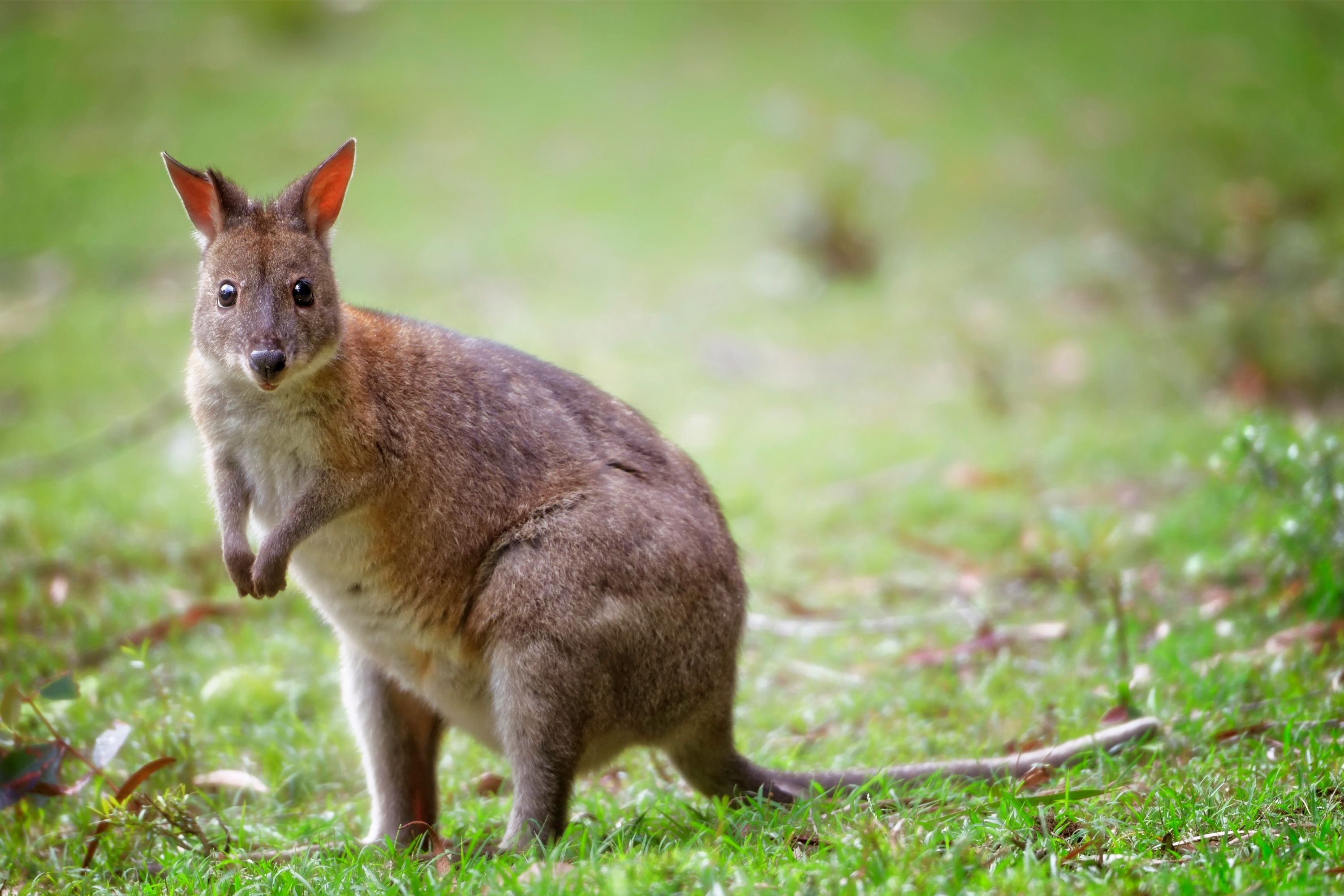Tasmanian pademelon
(Thylogale billardierii)

Description
The Tasmanian pademelon (Thylogale billardierii), also known as the rufous-bellied pademelon or red-bellied pademelon, is the sole species of pademelon found in Tasmania, and was formerly found throughout southeastern Australia. This pademelon has developed heavier and bushier fur than its northern relatives, which inhabit northern Australia and Papua New Guinea. The scientific name honours J.J.H. Labillardier, who collected the first specimen on an expedition to what was then Van Diemen's Land in 1792. There are no recognised subspecies. The Tasmanian pademelon has a compact body with short, rounded, ears, thick fur over the limbs, head, and body and a tail covered with short hairs. It has greyish fur over most of the body with yellowish to rufous underparts, and, unlike most other pademelons, has no distinct facial or hip markings. Males reach around 6.5 kilograms (14 lb) in weight, 70–120 centimetres (28–47 in) in length including the 30–45 centimetres (12–18 in) tail, and are considerably larger than the females, which average 4.6 kilograms (10 lb). Pademelons are abundant and widespread across mainland Tasmania, and are also found on the nearby King and Furneaux Islands. They were extirpated from the Australian mainland during the 19th century. Rainforest, sclerophyll forest, and scrubland are preferred, although wet gullies in dry open eucalyptus forest are also used. Such places, next to open areas where feeding can occur, are especially favoured. The Tasmanian pademelon is a herbivore feeding on a wide variety of plants, from herbs, green shoots and grass, to some nectar-bearing flowers. Once a part of the diet of the thylacine, the Tasmanian pademelon is still preyed upon by other predators of the island, including Tasmanian devils, quolls, and eagles, as well as dogs and feral cats. Even so, they are abundant to the point of being culled occasionally (along with other wallabies) to reduce competition for grass with the farmed animals. Hunting of the Tasmanian pademelon is allowed, its pelt having some economic value and its meat being palatable.
Taxonomic tree:







